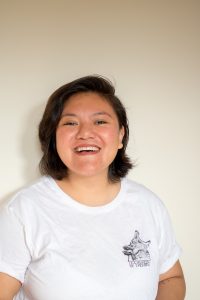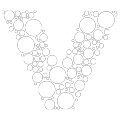
Faune Ybarra
Faune Ybarra is an interdisciplinary artist from Mexico City and the south of Mexico. During her time at Grenfell Campus, Memorial University she has received numerous awards ranging from community engagement to academic merit. In her practice she works with notions of belonging and resilience using her art as a way to start conversations with the members of the community she inhabits.
As an artist originally from Mexico City, how do you feel that living in Newfoundland and Labrador has influenced your art practice?
I am from Mexico City but I was also half-raised in the state of Oaxaca in the south of Mexico. While growing up I kept going back and forth in between these places having to re-adapt to new cultures, traditions, dialects, and so forth. There was always a feeling of not completely belonging somewhere, this is a recurrent topic in my projects. In the 4 to 6 hour drive between Mexico City and Oaxaca I always felt at home looking at the landscapes in the highway. Moving to NL, where there is a strong connection to nature and seasons completely change the landscape every couple of months was like being given a gift. Getting to experience the Fall-Winter-Spring-Summer weather and seeing how my body adapts to this place has changed my approach to art making starting with my body as a geographical departure.
What mediums do you particularly like to work in and why?
That’s a great question! I love the process more than the actual result of say a painting, a print. I like using my body to understand space so I feel very comfortable in the darkroom where you don’t only use your eyes, but your ears to listen the film loading correctly into the reel, your touch (WITH DRY HANDS) to figure out which side of the paper is the correct side, and your intuition to when you are experimenting and you have to wait to turn on the lights to see what’s in there. I guess that’s a bit of analogue media, analogue media and time-based media.
One of the themes I’ve noticed in your work is your exploration about the endless possibilities of language. Can you elaborate on your thoughts about language and how it enters your art practice? What other themes do you work through?
Sure, so language has always been an area of interest for me. I don’t know, I remember learning the alphabet in English before learning how to write in Spanish, that messed me up; I remember creating my own language at twelve and trying to convince my entire class to use it; I still have a “visual alphabet” I made to understand other people. I guess that’s what is all about: understanding others. When I say understanding I mean really processing and feeling someone or something else’s reality. When you see the letters “A B C D” you play a sound in your head, I listen to something different, and a tree would not even translate these letters to sound; yet we assume that we see is what everybody sees and experiences. What I do with my projects is to try to move away from the pressure of what it means to me to focus more on the experience. You might not know a thing about where I come from but you and I can feel and see for a couple of seconds the red colour we see when we close our eyes and look at the sun.
I’d like to talk to you about your work θ – [TH] How To Find Your Own Language. This performance was selected to be part of the upcoming CBNuit After Dark Festival on October 13th, congratulations!! Could talk a bit about it and how this project began?
This project was developed over the summer in part under the guidance of D’Arcy Wilson, an amazing VA professor at Grenfell. I had the opportunity of going back home for a month in May and it was the first time I got to create in my own language and in my own country. I was so grateful I got to see my family and friends, ride the subway, going for walks, fresh veggies, you name it! It was all so wonderful but I couldn’t find a way to say or express this with a simple “gracias”. It was weird, I mean Spanish is my first language but “Gracias” doesn’t fully convey this feeling and it sounds, ironically, to aggressive. At the time I was researching phonetics and when I came across the phoneme, or the visual representation, “θ” [TH], it all made sense. It’s so gentle to word the “TH” of “THank” to say THank you or THanks or THoughtfulness. That’s what this project is about, the thoughtful act of being thankful. So I made this 6’ banner with the phoneme and took it with me to friend gatherings, to the last cup of coffee before returning to NL, to bed, to the house my friend wanted to buy, to my room in another city, to an improvised beach picnic. I’ve been performing and activating this banner back home and across the province. I am inviting now people in CB to be thankful with me!
What are you thankful for?
It’s a long list but I would say that I am thankful for: the sun when it comes out and hangs out with us, for Corner Brook as it has become my second home, for my friends and whatever makes them happy, for the gestures of kindness strangers have in the streets, and overall I am thankful for still being around.
This is your graduating year of the Visual Arts Program at Grenfell Campus, have you thought about what you would like to pursue after?
As I have said from day one, I am here to stay. I would love to stay in the province as it is so close to my heart now however, I would love to see more diversity and inclusivity to feel like I am welcomed. I would love to work somewhere where I can facilitate this. Community programming with a component of art – I want to see people from diverse cultural backgrounds making art, skill-sharing, initiating interesting conversations with artists, becoming artists themselves.
Check Faune out on Instagram! @wordlessp4commonppl
